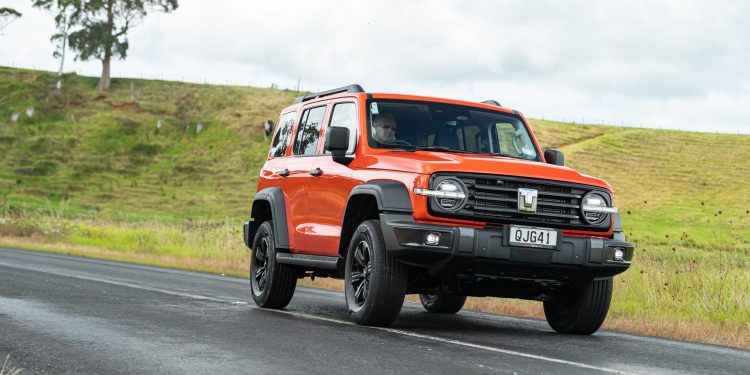2024 GWM Tank 300 Lux Hybrid review
Words: Peter Louisson | Photos: Isaac Western
Tank is a new auto name, a division of GWM. Its first offering is the 300, an off-road-oriented SUV. We check out the AWD Lux Hybrid example.
Here’s a vehicle that kind of emerged from left field. It’s called the Tank 300 and it got its name for its utilitarian go-anywhere look.
It’s solid like a tank too – you have to muscle the doors closed – and it can do a facsimile of a tank turn, no, truly. Even the key fob features an interlocking T and U, representing Toughness for You!
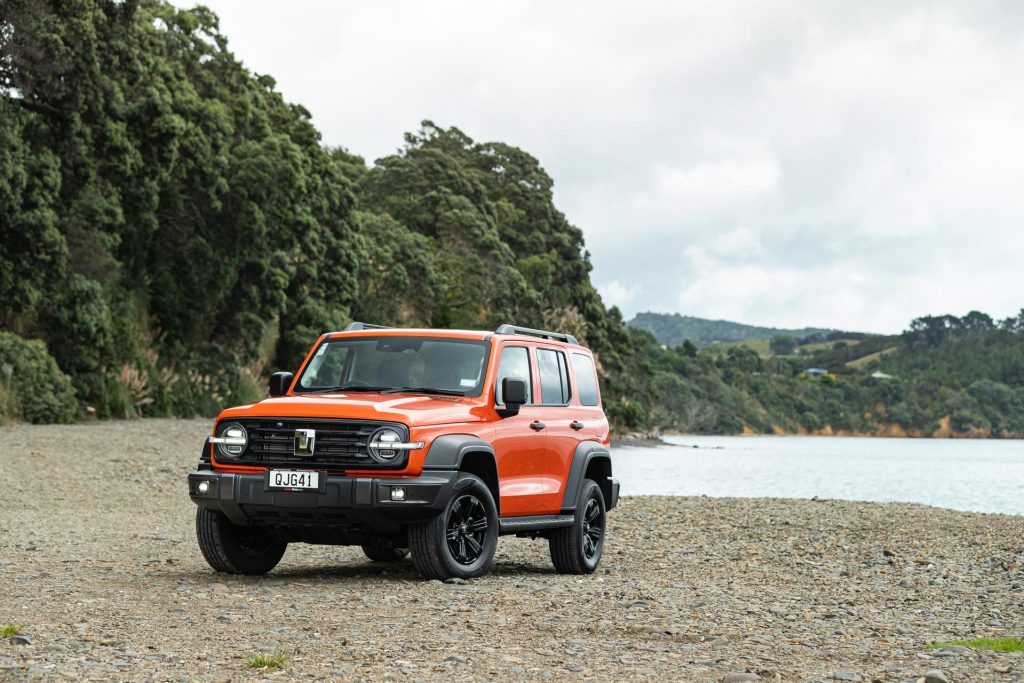
Clearly there are some design influences here, the most obvious being the former Korando’s front end, but there’s also a hint of Jeep and Jimny.
The look of the first offering from the new GWM division is interesting; it comes across as retro-modern, squared off, purposeful, the elevated stance and exaggerated wheel arch moldings suggesting it’s ready to take on anything.
The raised ride height, marked fender flares and the underbody protection along with 224mm of ground clearance suggest proper off-road ability. Not so much the Hankook Ventus S2 road tyres though.
Underpinning it all is the P71 full-frame platform which is shared with the Canon Ute, featuring double wishbones at the front and a solid axle with coil springs at the rear.
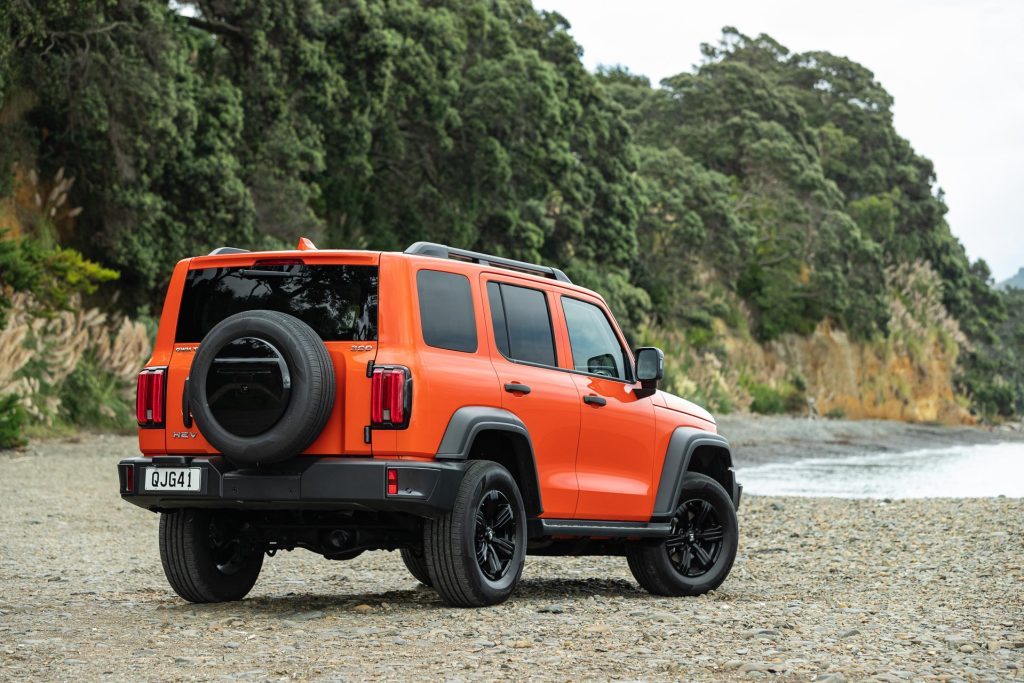
Approach and departure angles are 33 and 34 degrees, respectively, wading depth is a claimed 700mm and all variants have a locking rear diff. And of course there’s AWD with low range for when the going gets properly tough.
There’s even a Crawl mode. It can tow too, with a braked hauling capacity of 2500kg.
The Tank 300 is a genuine 4×4 then but is certainly a couple of sizes up on the Jimny five-door. It is near enough to 4.7m long and roughly 1.9m in both the width and height dimensions.
There’s seating for five, and upholstery is faux leather in the Luxe model we’ve been driving. It’s Nappa in the Ultra variant.
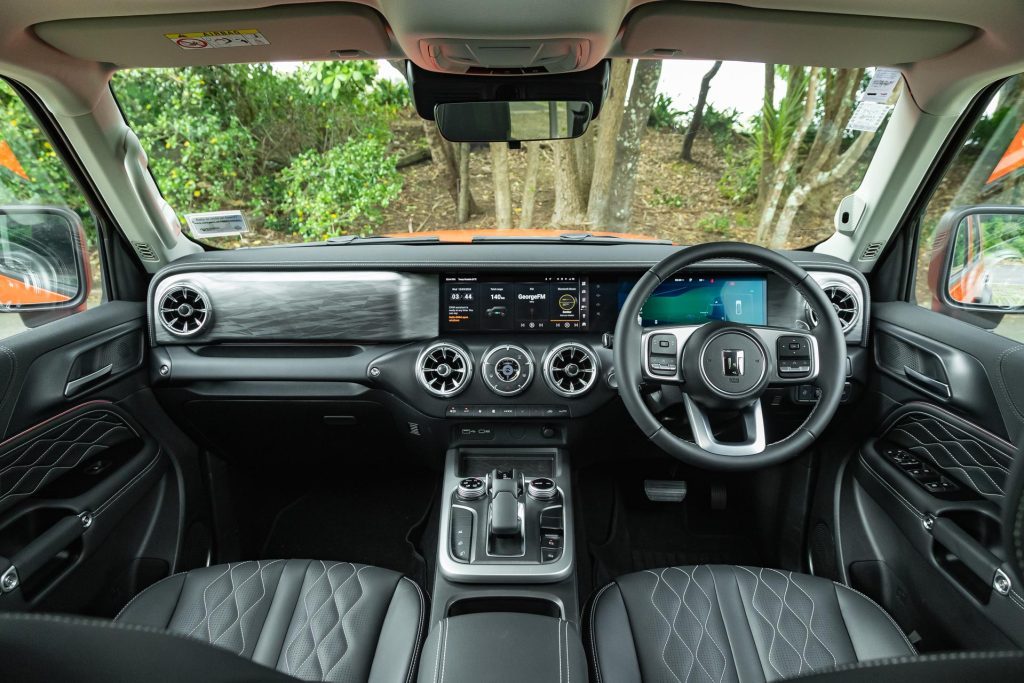
Initially it was only coming as a hybrid but beneath the Luxe and Ultra pair are two purely petrol units, the 2.0L turbo stumping up with 162kW of power and 380Nm of torque.
In the hybrid the turbopetrol is good for 180kW of power and 380Nm, while the motor adds 78kW and 268Nm. Together system output is a beefy 258kW and 615Nm, though it needs all of that because the Tank 300 weighs a solid 2313kg.
Still, that’s enough to make it feel quite zippy when you find the Sport setting and mash the throttle for an overtake. GWM rates hybrid fuel use at 8.4L/100km, though rightcar is closer at 9.4L/100km we feel, given fuel use during our tenure was in the elevens.
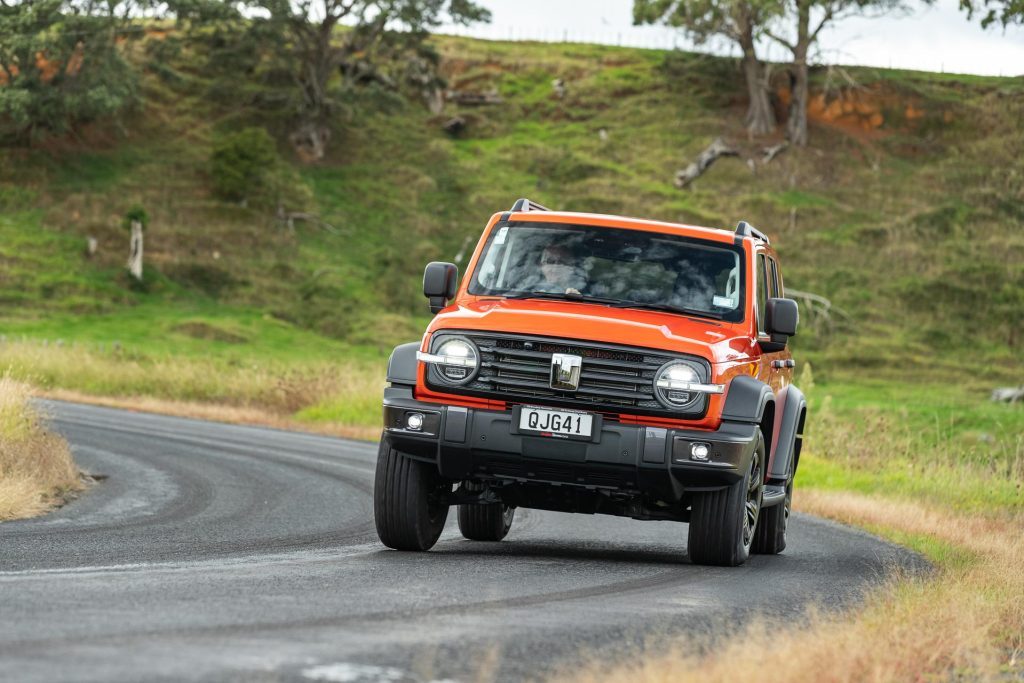
Safety systems to the max
The colour of this particular vehicle is Dusk Orange. As usual with the hue, some loved it while some really didn’t. To my mind, vehicles that get seen are less likely to be hit.
This is fitted with enough safety systems to warrant a five-star ANCAP rating but some of them are really annoying. There’s the usual stuff present, like lane keeping, traffic sign recognition, adaptive cruise and RCTA.
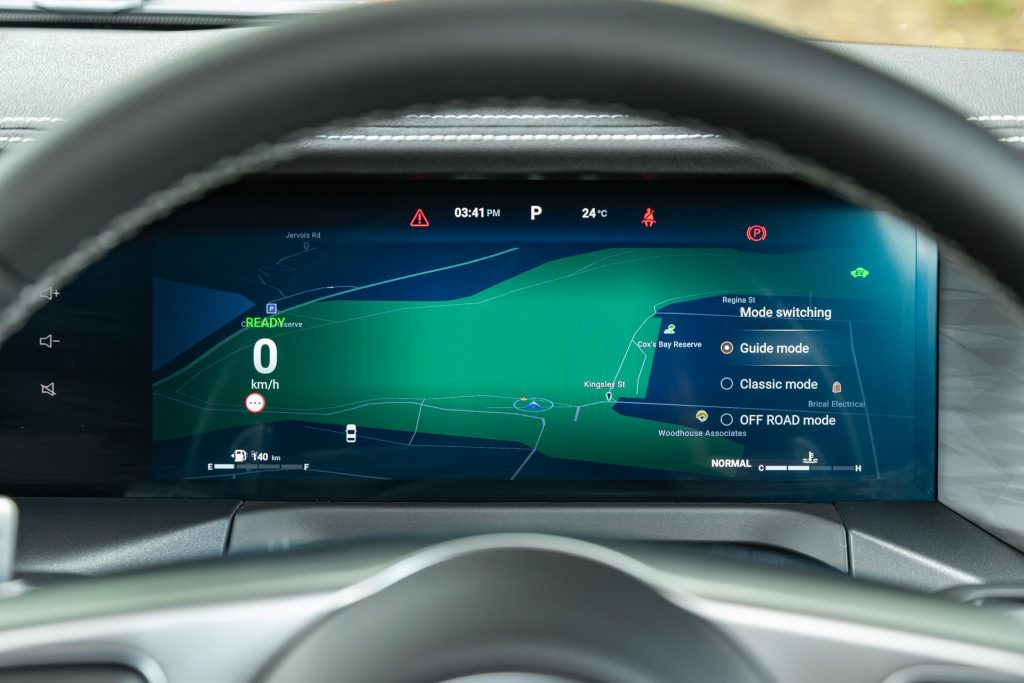
Only there are constant verbal rebukes for exceeding the speed limit, and the ‘assistant’ feels duty bound to inform you of a “curve approaching, take care”. “Don’t be distracted”. Ad nauseam; it’s the kind of trite advice you really don’t need.
After heading into the touchscreen and cancelling traffic sign recognition (she continued to issue forth), it dawned upon me to silence the ‘assistance’ by turning the volume down all the way to zero.
That worked. Most of the truly annoying items stay off once cancelled, tank heavens, except for emergency lane keeping assistance.
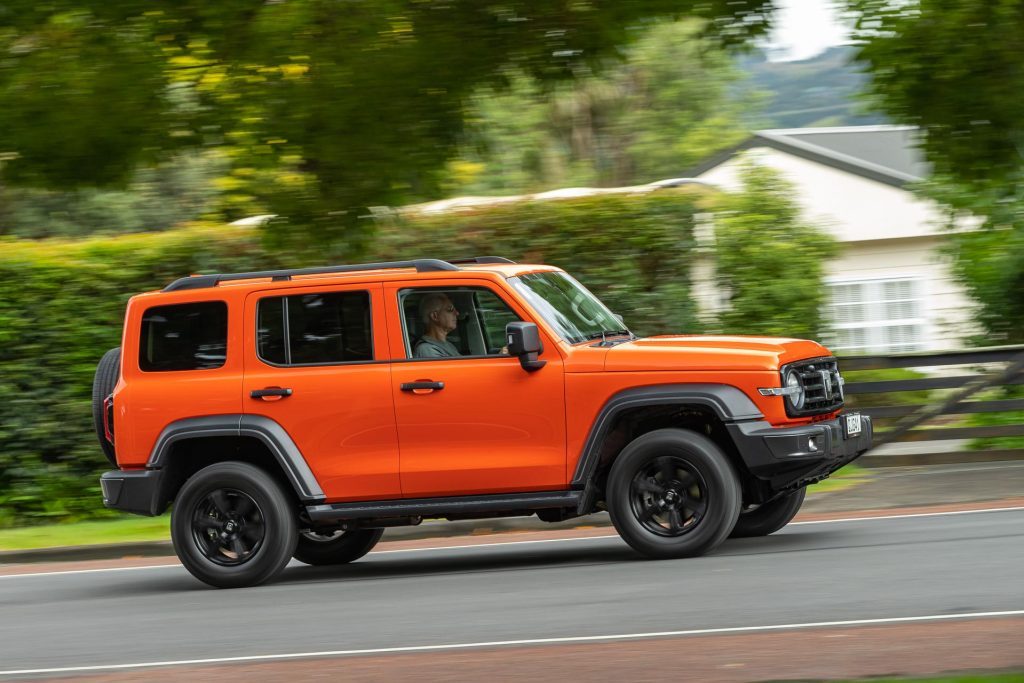
At each restart I had to find the “smart drive” submenu (thoughtfully hidden near the bottom of the screen) to cancel this.
Then we were ready to actually drive the beast sans all the annoying interventions. Much. Better.
Flash cabin
The interior is an interesting place to be, more luxo than you’d expect of an offroader. There are large shiny Merc-like vents that deliver a good stream of cool air and can be switched to closed.
The quilted seat pattern reminds of Benz too. While the touchscreen is nicely integrated you do sometimes need to tap it a few times to achieve what you were trying to do.
The mock alu dash trim with its random carbon pattern looks interesting. There are plenty of useful handholds too, a must in an off-roader.
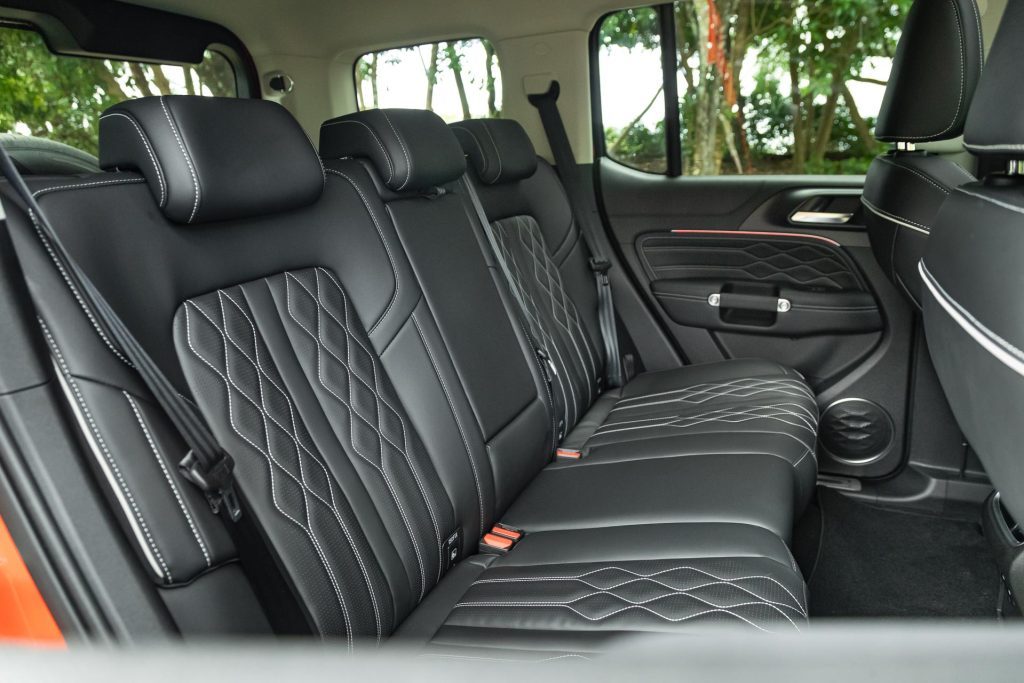
For the life of me, I never got to work out how to run the adaptive cruise control. It proved tricky to activate, even after consulting the handbook. We were doing it right; it was just a bit random to initiate.
This is packed with standard kit that includes a powered driver’s seat, sunroof, LED headlights with DRLs, ambient lighting, TPM, seven airbags, and surround cameras that help with off-road progress and parking.
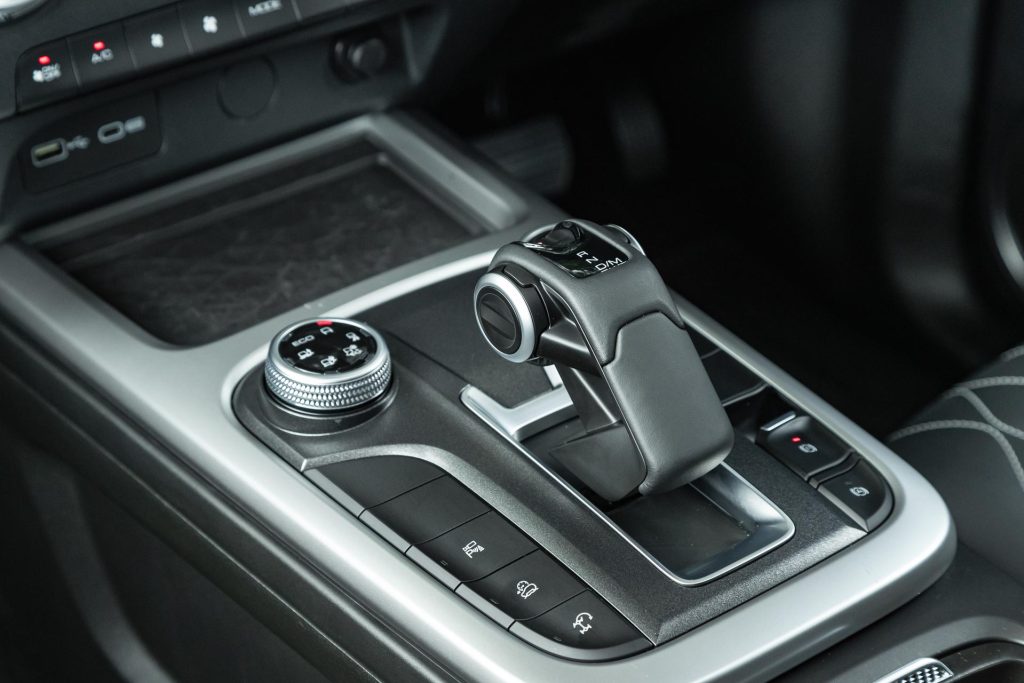
For $5k more the Ultra adds Nappa leather trim, heated and vented front seats, a Qi charger, a front diff lock, auto parking and nine-speaker Infinity sounds. Both come with a seven-year/unlimited km warranty.
Out the back, there’s room for three adults, and the squabs can be lifted up and rolled forward, to create a completely flat floor when split folding.
There’s not a huge capacity with all seats in use, around 400L, but after split folding there’s almost room to party back there with 1635L. Oddly, when you lift the floor protection in the rear, the 1.75kWh battery pack is exposed.
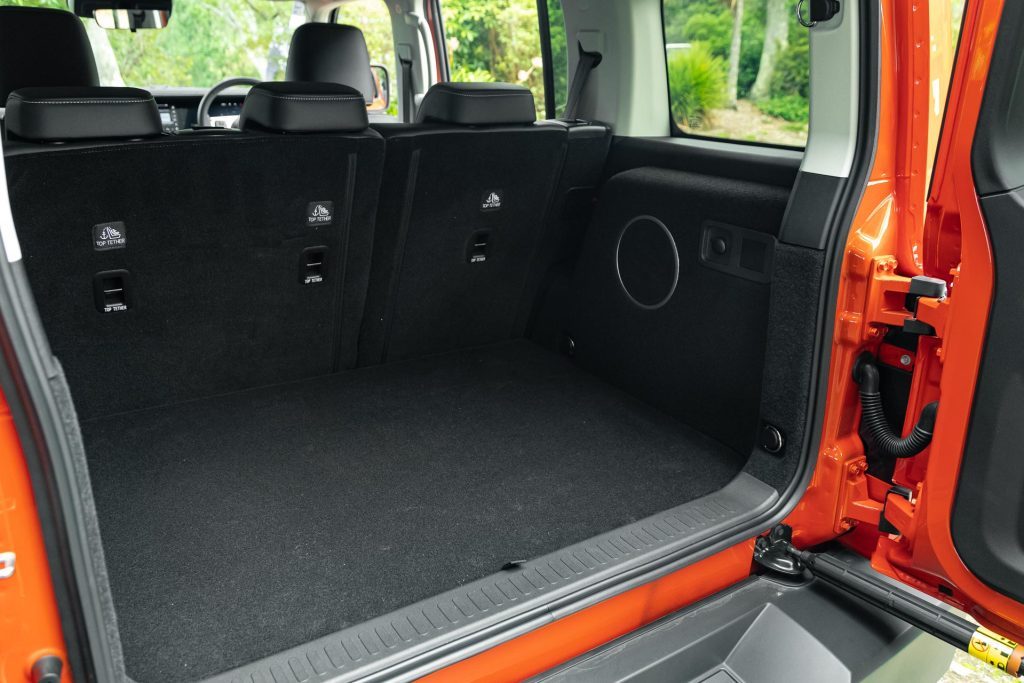
Gets along pretty well
So how does it go exactly? Many SUVs that have an off-road bent don’t take to the road that well. They often have odd steering quirks because of the recirculating ball system or they’re rough riders because of their rigid axles.
Sometimes they’re pretty slow too, and aren’t that happy on tarmac. Well, the Tank 300 isn’t like that.
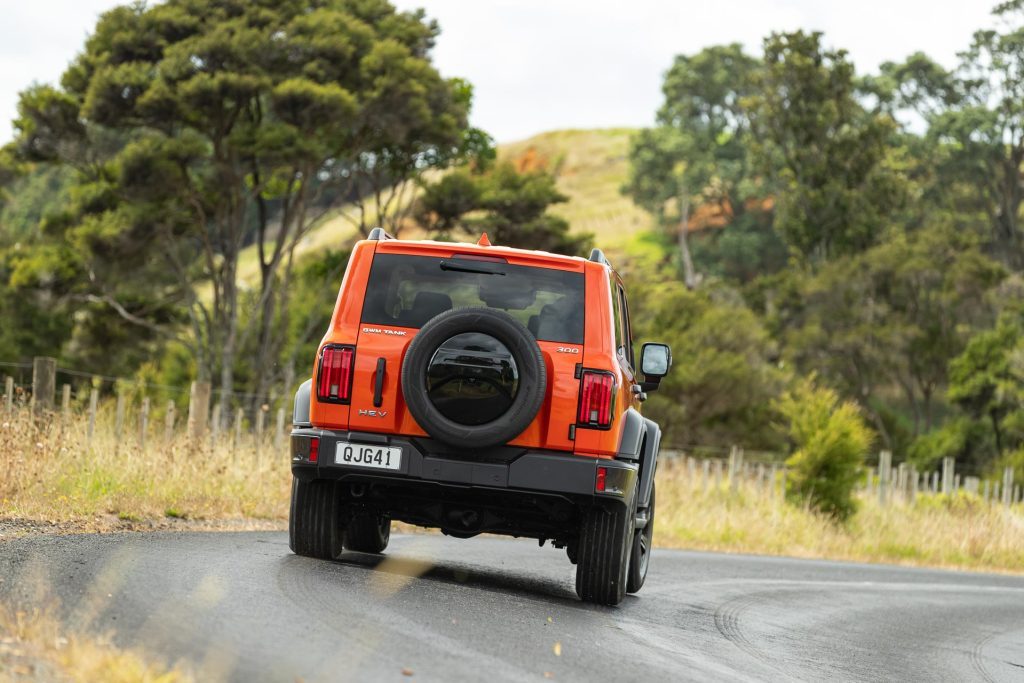
As expected of something with a full frame it’s not the flashest in the ride department, but it isn’t too shabby either and that’s because the rear axle is suspended by coils and not leaf springs.
Yes it will understeer when pushed, but road-oriented tyres help counter that and it’s nothing like as marked as some we’ve helmed recently. The reality then is that this feels quite SUV-like on regular roads rather than being off-road agricultural.
Even the steering isn’t bad, if somewhat distant, as you’d expect of its 65 aspect rubber. But you’re not up around four turns lock to lock either, like with other dedicated off-roaders; this is just over three.
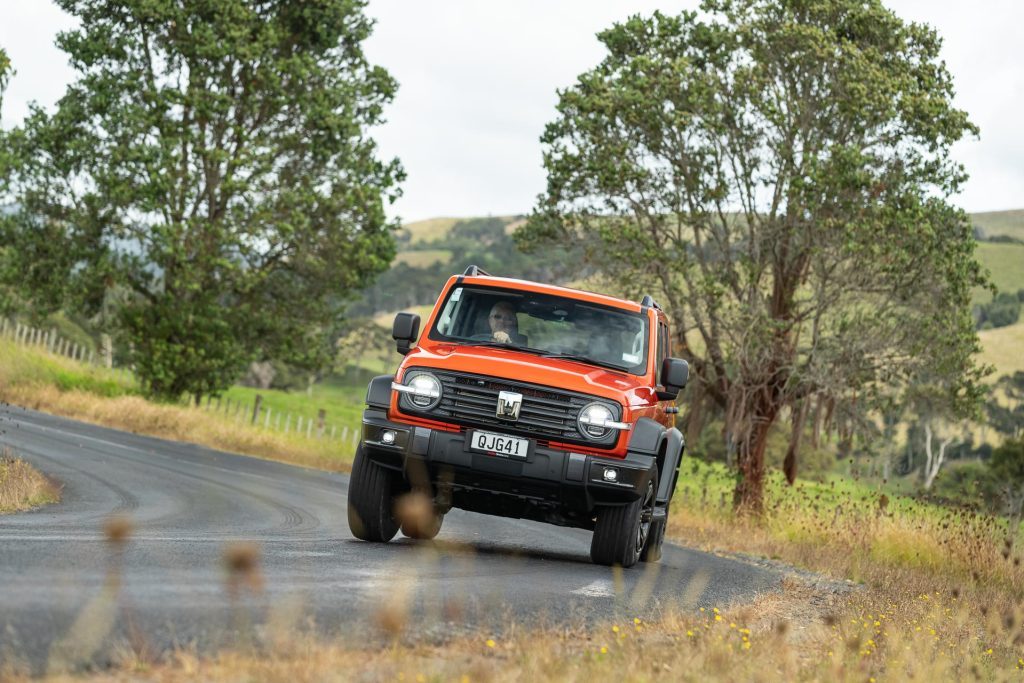
It also does the things well that you’d rather hope an SUV does. There’s pretty good visibility, even to the rear despite the spare taking up a chunk of rear window space. And it is quiet on the go, even when given the big stick for a passing manoeuvre.
The take-off from standstill is handled by the motor and then the engine chimes in. At first I thought there were no drive modes per se; I looked down and just saw images of cactus and the like on the selector.
And the Mode button up on the dash actually gets you into the climate control area on the touchscreen which is a bit odd; why call it a mode button when this invariably refers to drive settings?
Anyhow, that’s why initially I thought you needed to get a bit too active with the gas pedal when asking it a question. Later we had a closer look and lo and behold, there is a Sport drive mode.
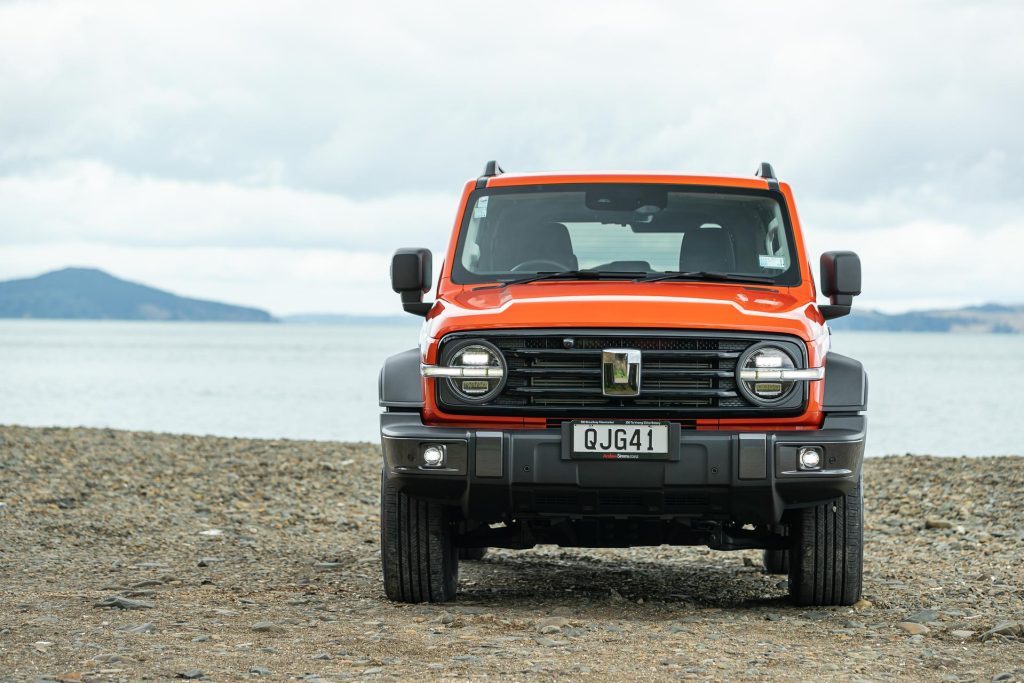
Where the Normal mode feels more like Eco mode in most other vehicles (which this also has), the Sport mode in the Tank 300 seems more like a Sport+ setting. It’s fizzing at the bung to get going and chirps the tyres without too much provocation.
But I’d rather it this way than the other. It will hold the gears a touch longer too but when you have nine to play with, that’s no biggie. We drove it in Sport mode for the rest of the time out of town and left Normal for urban use.
Given its head, it managed an overtake in five and a half seconds, and easily hit open road speeds inside of its claimed 8sec (think closer to seven).
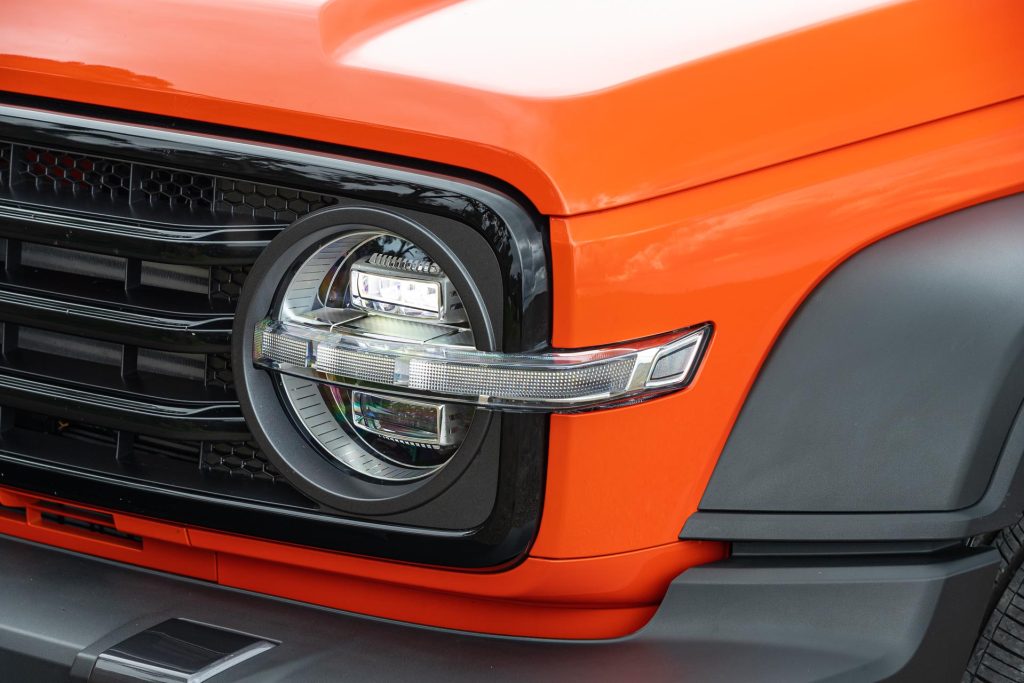
Only under emergency braking did it give some hint as to its off-road focus, the soft suspension making for plenty of dive under ABS, the rears therefore not contributing much stopping power.
We achieved a best of 41.33m and pedal feel isn’t special either. That said, this has good regenerative braking, especially on its top setting. It’s not single-pedal driving by any stretch but on winding roads it’s generally enough to make the brake pedal surplus to needs.
And the tank turn? A bit of a gimmick really, especially as the turning circle is only 12m. And it takes time to set up. But hey, this is the Tank 300!
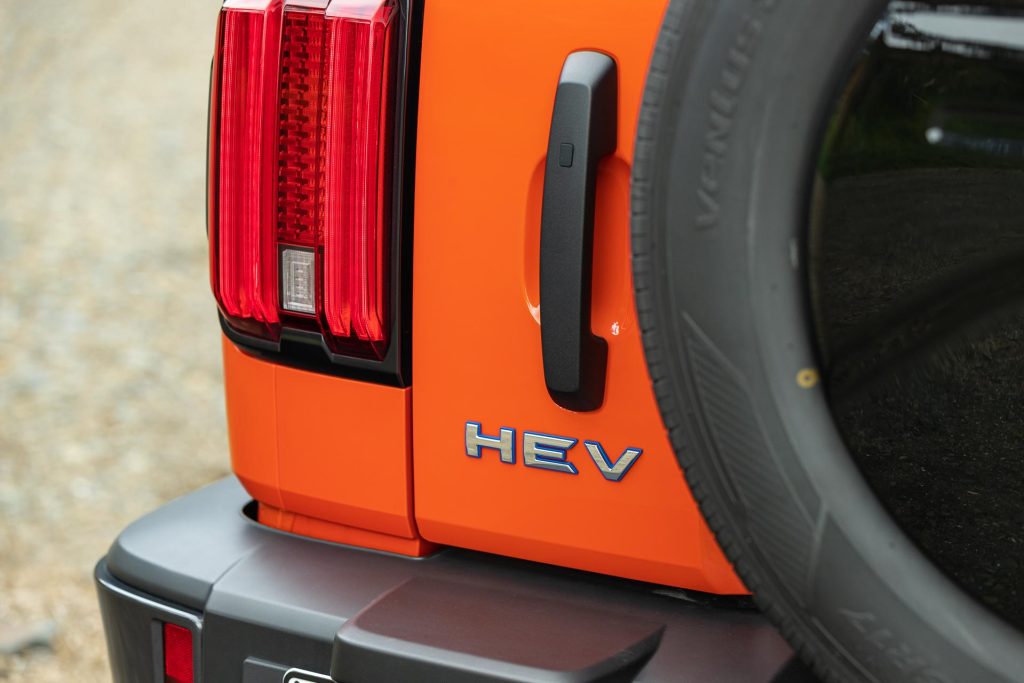
So all round a good effort – it certainly didn’t tank – especially if you want something that actually works well on road as well as off.
It is soon to be joined by a range topping seven-seater Tank 500 stablemate, two actually, at $75k and $82k, packing a similar powertrain but with 3000kg of braked towing capacity.
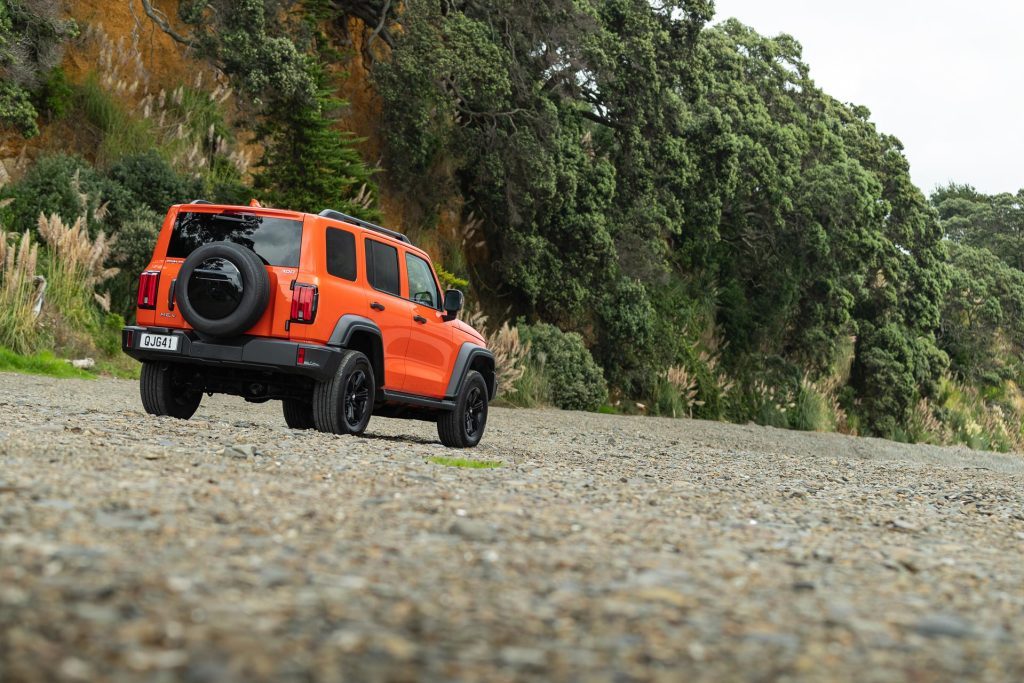
Keep a lookout for a first drive report soon.
This story first appeared in the April 2024 issue of NZ Autocar magazine.
| Model | GWM Tank 300 Lux Hybrid |
| Price | $56,990 |
| Engine | 1998cc, IL4, T, DI |
| Power | 180kW @ 5500-6000rpm |
| Torque | 380Nm @ 1700-4000rpm |
| Hybrid Output | 258kW / 615Nm |
| Drivetrain | 9-speed auto, AWD |
| Turning circle | 12m (3.25 turns) |
| Fuel Use | 9.4L/100km |
| C02 Output | 216g/km |
| 0-100km/h | 7.13 sec |
| Tyre Size | f/r-265/65/R17 |
| Fuel Capacity | 75L |
| Stability systems | ABS, ESP |
| Safety | AEB, ACC, BSM, LDW, RCTA, ALK, AHB |
| Luggage Capacity | 400-1735L |
| Tow rating | 750kg (2500kg braked) |
| Service intervals | 12 months/15,000km |
| Warranty | 7 years/unlimited km |
| ANCAP rating | Not yet rated |
| Weight | 2313kg (claimed) |


